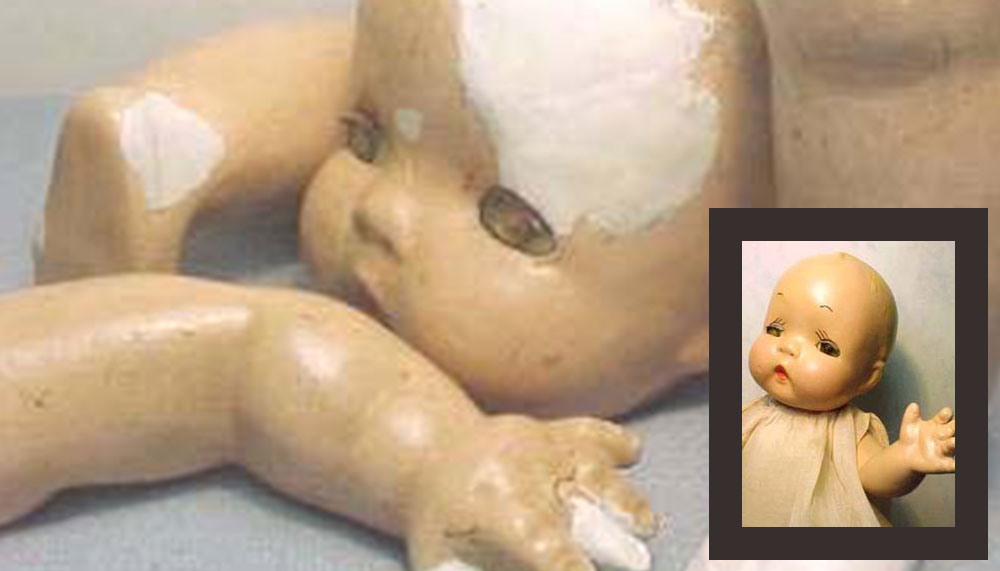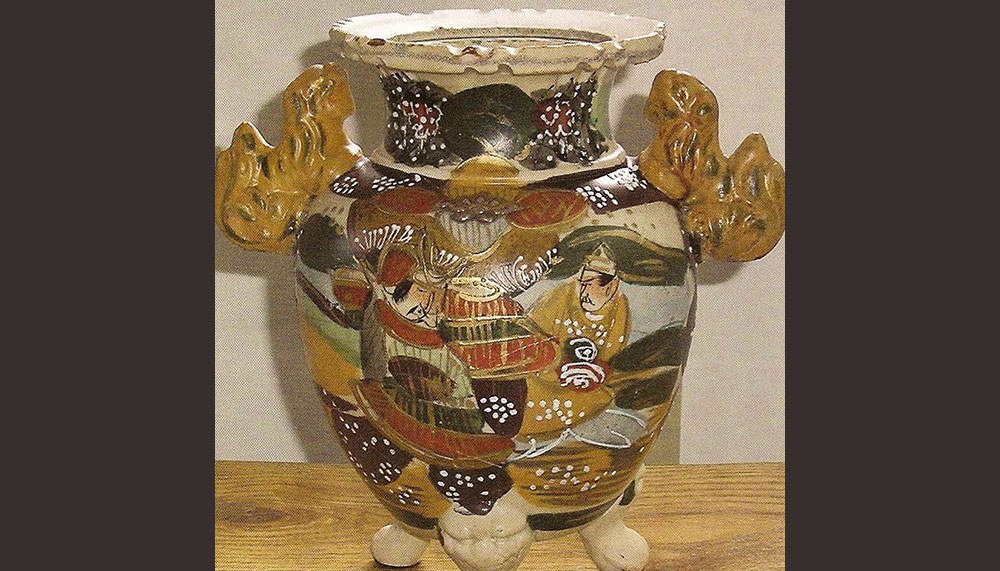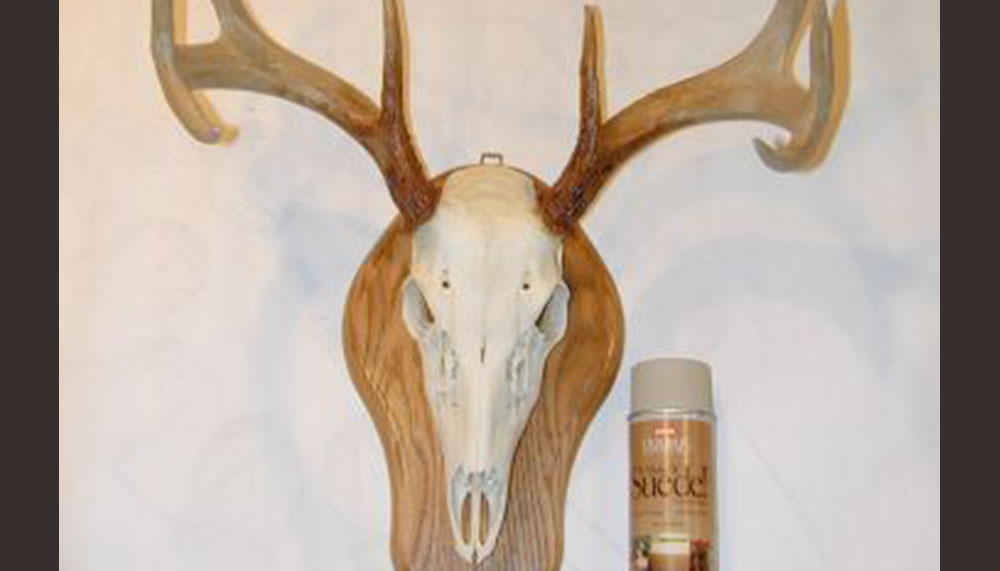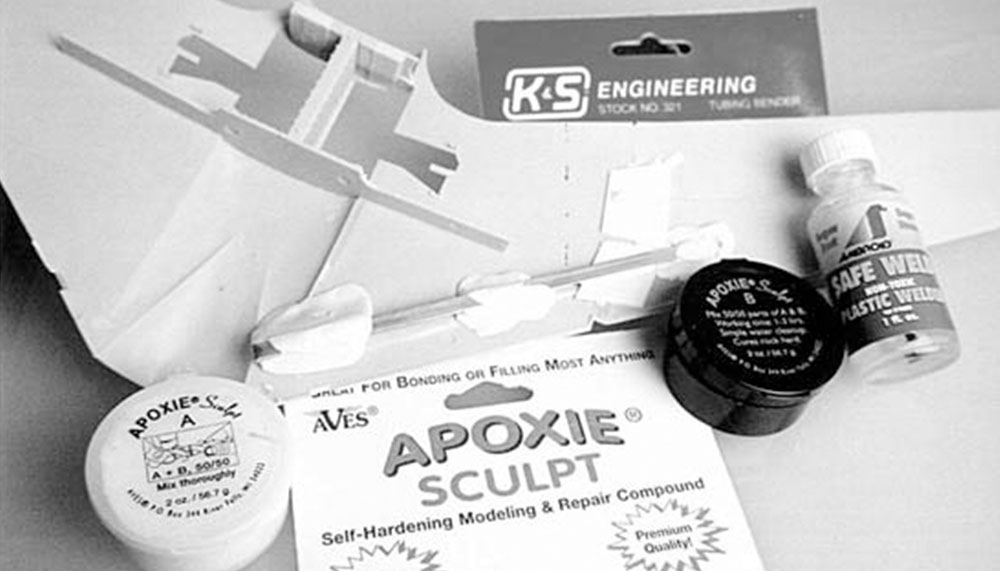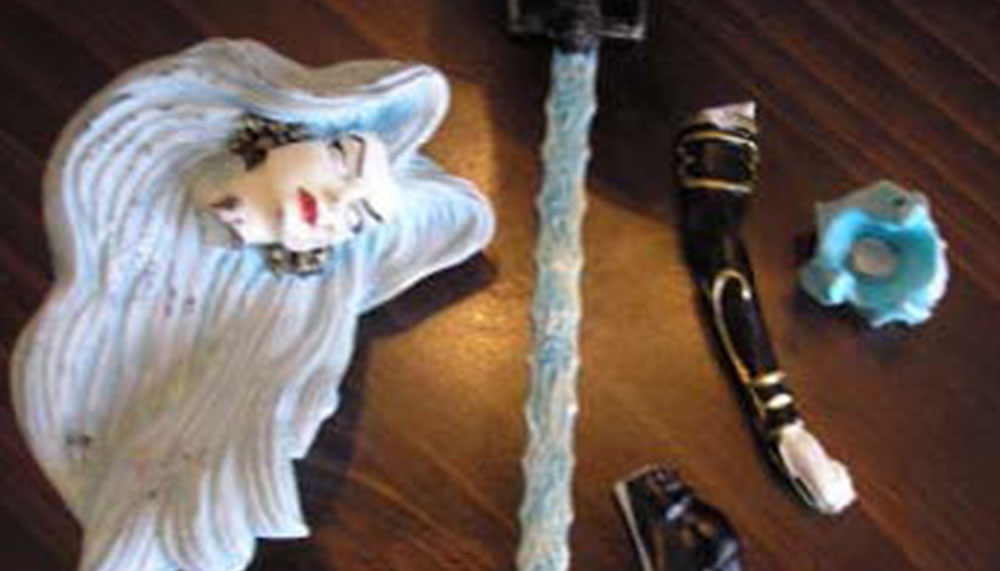Tutorials
Modern “Apoxies” Restore Award Winning Doll
by Dwaine Gipe The Little Cherub, a 1937 Composition by Harriet Flanders, was restored by Dwaine Gipe, and won a 1st place in the 2002 National Doll Doctors’ Association Restoration Contest.
The restoration was done primarily using products by Aves Studio. The three products used were Apoxie® Sculpt, Apoxie® Paste, and Apoxie® Safety Solvent. The restoring artist, Dwaine Gipe, is the recently retired other half of G&M Doll Restoration Seminars.
ABOUT APOXIE®
Aves® Apoxie® products are two-part (A+B), non-toxic and nonsolvent based materials. They give the artist a few hours of working time, they harden in two to four hours, and then cure overnight. Apoxie® Sculpt is putty-like, and Apoxie® Paste is a semi-fluid. The Apoxie® products, once mixed, can be used to create many workable mediums. The Sculpt and Paste can be blended together if you need a medium that is thinner than the Sculpt but thicker than the Paste. For an even thinner product, the Apoxie® Paste can be heated (microwaved) in fifteen second units of time, clear down to a brush-able state. Both the Sculpt and Paste can be heated. (Always be careful handling hot, sticky substances!) It is not necessary to heat the product unless a thinner medium is required by the artist. The Apoxie® products can be sanded, tapped, drilled, sawed, and painted wet or dry with any paint medium. They are much stronger than the base material of sawdust and glue, and can be removed if there would ever be a reason to redo or alter the restoration. They do not attract or absorb water when cured, and are in fact waterproof. The products may be purchased in small amounts, just the perfect size for small restoration jobs. This enables hobby and craft shops to sell smaller sizes at less cost.
Just a few years ago we did not know about epoxy and epoxy products. Most modern restorations of many items, including dolls of nearly all types, are done with epoxy today. Most books on the subject of doll restoration were written before these products were developed. Like many products, they may have been cranky and hard to use at first. Now, Aves® Studio has invented an epoxy-type product, called Apoxie®, that is very easy to use. It will stick to almost any hard, clean surface, including porcelain, ceramic, glass, wood, metal, plastics, and more. It will not stick to dolls that have been scrubbed, smeared, or painted with wax base products.
THE RESTORATION PROCESS
The doll, Little Cherub, was mouse eaten, literally. The mice entered the face, went through the neck to the body, and chewed right out through the foot. They had food, darkness, and two entries or exits in which to raise their family.
The head restoration consisted of placing a piece of dry wall construction nylon webbing with a small smear of Aves Apoxie® Paste. When hardened, the webbing became the base onto which more of the Apoxie® was anchored.
Sculpting of contours is easy and may be done very well leaving very little sanding to finish. The major tool used at this point is the artist’s moistened finger (water is fine). Apoxie® Safety Solvent was used to smooth the sculpted surface and clean tools. In the past, acetone was used for smoothing or clean up, but Apoxie® Safety Solvent is a healthier and much safer choice.
Large deep fills are sometimes harder to sculpt because the volume of Apoxie® Sculpt seems to move or squish away from the artist. In the foot application, a roll of nylon webbing and a small amount of Apoxie® Sculpt forms a centered, firm support that helps the artist sculpt the foot. *Please note the anchor holes going up the side of the leg. Toenails are dimpled by using an orange stick, like ladies use to work on their own nail care.
Finger restorations need no wire support in most instances. The artist is showing the use of a Dremel and diamond disk to create a key slot for the Apoxie® Sculpt. Apoxie® Sculpt was literally shoved down into the slot and the open finger, which created the holding surface. The fingernails are dimpled with the same orange stick.
Sanding the work, when necessary, can be easily accomplished with a Dremel tool for the rough work, and then various grits of sandpaper for hand finishing. The artist finished this restoration by sanding with 150 grit sandpaper. Painting was done with the Paasche AB Turbine Airbrush and Dr. Martin’s Spectralite water based acrylic paints, created specifically for airbrush application. The eyelashes and the eyebrow over the restoration were done using semi transparent base paint and a Seeley Eyeliner Brush. A Duncan spray can clear acrylic sealer was applied to the new paint, both medium gloss and no gloss, separately and together for various degrees of shine. The rest of the original paint on this doll was cleaned with Old Fashioned Glass Wax and Bon Ami; no sealer was necessary on the original old paint.
Less than one fourth of the face was touched with new paint, thereby pleasing industry critics by restoring only that which was absolutely necessary. Over seventy-five percent of the original head was saved.
While other modern products may be used, it is important to note that small shop or one-doll restorations can be done with the finest materials within a reasonable budget, while using only Apoxie® as a filler. The team at Aves Studio has both large and small product amounts for sale, and a nice selection of other Apoxie® products for other specialized needs.
**************************************************
For this Blue Ribbon Restoration, the products used were:
Apoxie® Sculpt
Apoxie® Paste
Apoxie® Safety Solvent
Various grits of sandpaper Nylon webbing
Dr. Martin’s Spectralite acrylic paints
Paasche AB Turbine Airbrush
Orange Stick
Old Fashioned Glass Wax
Bon Ami
All product and trade names, trade marks, and service marks owned by their respective legal owners.

